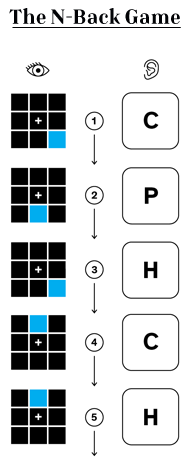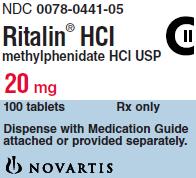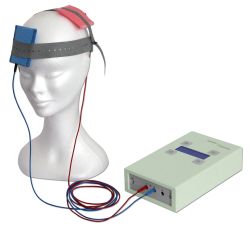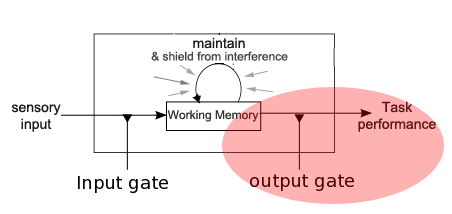Intelligence & IQ Defined
Our intelligence measured by valid IQ tests is our ability to grasp situations, reason, problem solve, and learn and act efficiently and effectively. David Wechsler – the creator of the most widely used IQ test, the WAIS – defined intelligence as:
“the global capacity of the individual to act purposefully, to think rationally and to deal effectively with his environment.”
Intelligence is better conceived as being switched on, competent, a good learner and problem-solver rather than being just ‘book smart’ or ‘good at math’.
The value of IQ
A high IQ level is known to be correlated with many valuable things including the following:
achievement motivation, altruism, artistic ability, creativity, dietary preference, educational attainment, emotional sensitivity, health, sense of humor, income, breadth and depth of interests, leadership, longevity, linguistic abilities, memory, moral reasoning, motor skills, occupational status and success, and social skills.
IQ is inversely associated with accident proneness, obedience, alcoholism, authoritarianism, crime, dogmatism, neurosis, impulsivity, racial prejudice, smoking and obesity.
The practical advantages of having a high IQ increases as our work/career environments become more changeable and complex – more novel, ambiguous, unpredictable, or multifaceted.
IQ Increasing Technologies: A Review
IQ training for intelligence augmentation is a viable strategy. This article reviews three of the most effective IQ-increasing interventions that have a firm scientific basis – a basis in experimental laboratories and the exacting standards of peer reviewed scientific journals. The methods described below are part of the accumulated understanding of the scientific community about what can increase IQ through neuroplasticity change – not just temporarily but long-term. Cognitive-enhancing nutrition, exercise and meditation are not covered in this review that focuses on the use of intervention technologies. These strategies are reviewed here.
1. IQ Training Software
Far-reaching advances in cognitive psychology and cognitive neuroscience over the past decade have identified a close link between frontal lobe ‘working memory’ circuitry, and fronto-parietal problem solving and reasoning circuitry – core elements of IQ.
Working memory has a limited capacity, and the bigger that capacity the more the cognitive ‘RAM’ power a person has for processing information – to make connections, generate alternatives, and grasp relationships. This brainpower lies at the core of being smart.

IQ training software has now been developed for selectively targeting working memory circuitry, resulting in long term neuroplasticity changes increasing short term memory capacity, problem solving ability, self-control and overall IQ. This software is based on a training exercise called the dual n-back.
A recently published review on the effectiveness of n-back working memory training concludes:
“core working memory training produces far-reaching transfer effects…because it targets domain-general mechanisms of working memory. The results of studies encourage optimism regarding the value of working memory training as a tool for general cognitive enhancement.”
In choosing an n-back working memory training application, ensure that you have a version the incorporates interference control training. Recent research (article 1, article 2) show that the link between intelligence and working memory is specifically in interference control – the ability to filter out distracting information that attracts your attention. Almost all n-back training programs on the market do not incorporate this feature. Avoid them.

The HighIQPro app is explicitly based on interference control to increase IQ. There are a number of n-back apps on the market, but they do not typically incorporate interference control.
.
2. Nootropics (‘Smart Drugs’)
The issue of using medication for cognitive enhancement is highly controversial, but the ethics of smart drugs is not discussed in this article.
In 2008 the science journal Nature launched an informal survey into readers’ use of cognition-enhancing drugs, and found large-scale use among academics. One in five respondents said they had used drugs for non-medical reasons to stimulate their focus, concentration or memory.
In 2008 the scientific journal Nature ran a commentary on this topic entitled Towards responsible use of cognitive enhancing drugs by the healthy. The authors outline the evidence in favor of the effectiveness of ‘smart drugs’ and I will quote at length from the section “Paths to Enhancement” which reviews the nootropics known to enhance brain function:
Ritalin and Adderall
Many of the medications used to treat psychiatric and neurological conditions also improve the performance of the healthy. The drugs most commonly used for cognitive enhancement at present are stimulants, namely Ritalin (methyphenidate) and Adderall (mixed amphetamine salts), and are prescribed mainly for the treatment of attention deficit hyperactivity disorder (ADHD). Because of their effects on the catecholamine system, these drugs increase executive functions in patients and most healthy normal people, improving their abilities to focus their attention, manipulate information in working memory and flexibly control their responses…
Modafinil
A newer drug, Modafinil (Provigil), has also shown enhancement potential. Modafinil is approved for the treatment of fatigue caused by narcolepsy, sleep apnoea and shift-work sleep disorder. It is currently prescribed off label for a wide range of neuropsychiatric and other medical conditions involving fatigue as well as for healthy people who need to stay alert and awake when sleep deprived, such as physicians on night call. In addition, laboratory studies have shown that modafinil enhances aspects of executive function in rested healthy adults, particularly inhibitory control. Unlike Adderall and Ritalin, however, Modafinil prescriptions are not common, and the drug is consequently rare on the college black market. But anecdotal evidence and a readers’ survey both suggest that adults sometimes obtain modafinil from their physicians or online for enhancement purposes.
Aricept
A modest degree of memory enhancement is possible with the ADHD medications just mentioned as well as with medications developed for the treatment of Alzheimer’s disease such as Aricept (donepezil), which raise levels of acetylcholine in the brain. Several other compounds with different pharmacological actions are in early clinical trials, having shown positive effects on memory in healthy research subjects.
The authors focus at length on the potential risks and ethical concerns of using nootropic cognitive enhancers, but conclude:
Like all new technologies, cognitive enhancement can be used well or poorly. We should welcome new methods of improving our brain function. In a world in which human workspans and lifespans are increasing, cognitive enhancement tools — including the pharmacological — will be increasingly useful for improved quality of life and extended work productivity, as well as to stave off normal and pathological age related cognitive declines23. Safe and effective cognitive enhancers will benefit both the individual and society.
3. Cortical Stimulation – tDCS
A number of studies in the last few years have shown very promising results from applying electrical current to the brain using a technology known as transcranial direct current stimulation (tDCS). tDCS is a noninvasive technique in which a weak current is applied to the brain constantly over time to excite or inhibit the activity of neurons.
In late 2010, a group of researchers from University College London and Oxford University published a study showing that tDCS applied to the parietal lobes enhanced a person’s mathematical ability selectively, without influencing other cognitive functions. The improvement was found to have persisted six months after the training, showing the IQ gain was long-lasting.
Following this a study published in Clinical Neurophysiology showed that tDCS of a the dorsolateral prefrontal cortex (dlPFC) improves working memory functioning. The dlPFC is a region in the frontal lobes toward the top and side: hence dorso (top) and lateral (side). The researchers report that there was significant improvement in speed of performance following tDCS on an n-back working memory task.
In another study published recently, a team at Centre for the Mind at the University of Sydney demonstrated that tDCS can dramatically improve insight problem solving. Three times as many cortically stimulated individuals succeeded in solving puzzles needing creative insight. People find it difficult to think outside of the box because their problem solving ‘mind set’ becomes crystallized by habits. By inhibiting the activity of the left temporal lobe, and stimulating activity in the right temporal lobe, this team changed the balance between the two hemispheres of the brain, leading to better release from mental sets and better creative insight. One of the team, Professor Snyder, believes brain boosting headgear could be widely used.
“The thinking cap of the future is not one that helps us to remember facts as the internet has solved that problem, but one that facilitates learning and unlearning mindsets. It’s all about being original.”
Professor Snyder
Some of the most recent work on tDCS was presented in September this year by Professor Prof Heidi Johansen-Berg and her colleagues at Oxford University. They found that just ten minutes of motor cortex brain stimulation increases the speed of learning motor skills. In their study a musical keyboard sequence was the learning task.
“While the stimulation didn’t improve the participant’s best performance, the speed at which they reached their best was significantly increased.”
Professor Johansen-Berg
The researchers envisage the technique could be used to help in the training of athletes and suggest that the same method could be applied to other parts of the brain (such as the frontal or parietal cortex) to improve educational learning simply by positioning the electrodes in different locations so the current is focused on the correct area.
The potential for self-experimentation is exciting. As this BBC report on cortical stimulation states:
“The relative simplicity, low price (around £2,000 per unit), and portability of the technology may mean that, following further research, a device could be designed to be automated for use at home.”
Research Summary
One of my research areas is IQ and methods for how to increase IQ and IQ training. In this article I have reviewed three technologies that have been shown to have a substantial IQ increasing effect by the exacting standards of peer reviewed scientific research. The most effective technologies directly target working memory – the general purpose RAM power of our brain. But technologies can be effectively applied in a targeted way to enhance more specialized aspects of cognitive function such as motor learning, numerical ability or insight problem solving.
Intelligence augmentation is a cultural enterprise that is gaining momentum, but the technologies reviewed above take us into largely unexplored territory. It is our privilege to be in an era of both imaginative brain science, and responsible self-experimentation, to forge ahead in mapping out this territory.
Subscribe for free eBooks on IQ augmentation




